Valerie Goodwin is a US fiber artist who integrates her expert knowledge and experience of architecture into her textile artwork.
Valerie’s passion for architecture was cemented with degrees at Washington University and Yale University in the 70’s and 80’s. But whilst she loved developing her career, she could not forget her fascination with fabric and thread and built these skills in her spare time.
She found ways of combining the two and architecture design soon found its way into her quilts and textile art.
To this day, Valerie is inspired by a love of aerial views of landscapes and cities and many of her quilts are based on maps, both real and imaginary.
In 2013 Valerie wrote the book “[easyazon_link identifier=”1607056828″ locale=”UK” tag=”wwwtextileart-21″]Art Quilt Maps, Capturing a Sense of Place ”. Her award-winning work has been widely published and exhibited in museums and private collections, and she has lectured and given fiber art workshops nationally and internationally.
In this interview you’ll learn how Valerie’s passion to learn and experiment gave her the variety of techniques she uses today. Valerie takes us through her textile journey, from the personalised quilts she made for family graduations to the commissioned quilt for the Clinton Presidential Library, and onwards to the abstract expressionism she is working on today.
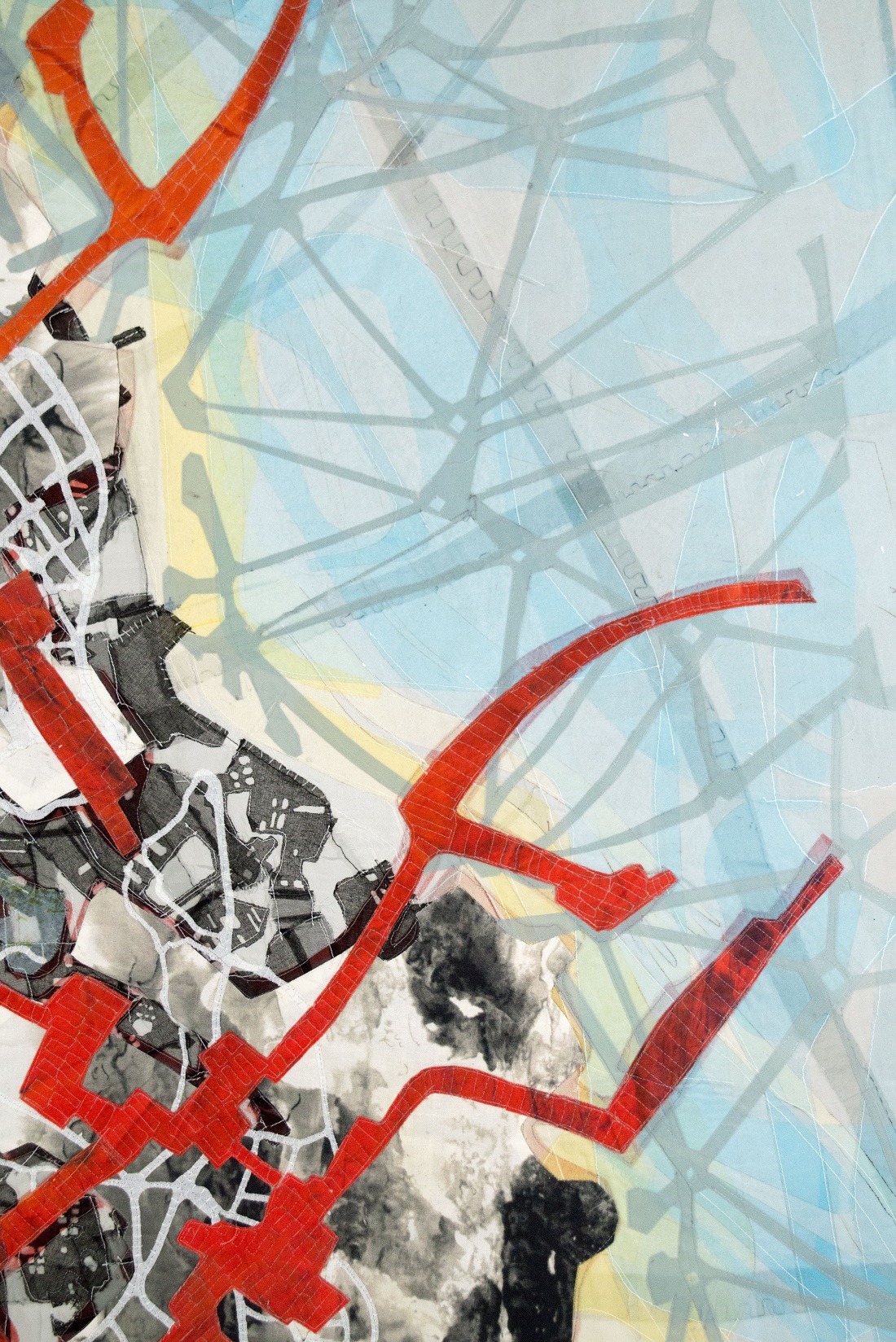
Building architecture design into quilts
TextileArtist.org: What initially attracted you to textiles as a medium? How was your imagination captured?
Valerie Goodwin: I became involved in fiber art over 20 years ago after reading about how quilt blocks could inspire architectural design. The article sparked my creative spirit and took me on a unique artistic journey. I then spent several years trying to discover how to combine my architectural background, love of aerial views and maps. During this time, I searched for ways of working with textile arts as a way to express myself artistically and find my own voice.
I explored all aspects of traditional quilting which I used for bed quilts. I studied piecing, paper piecing, hand applique, machine applique and hand quilting and also machine quilting and thread drawing. For wall hangings I looked at mixed media to use in my fiber art which included painting, monoprinting, stamping, stencilling and photo transfer onto fabric. I included fabric collage and played with fusing, layering and transparency.
What I loved about combining architecture with textiles was the fact that the mixed media and collage, in particular, allowed me the freedom to express myself using architectural ideas as well as to explore my love of aerial views and maps.
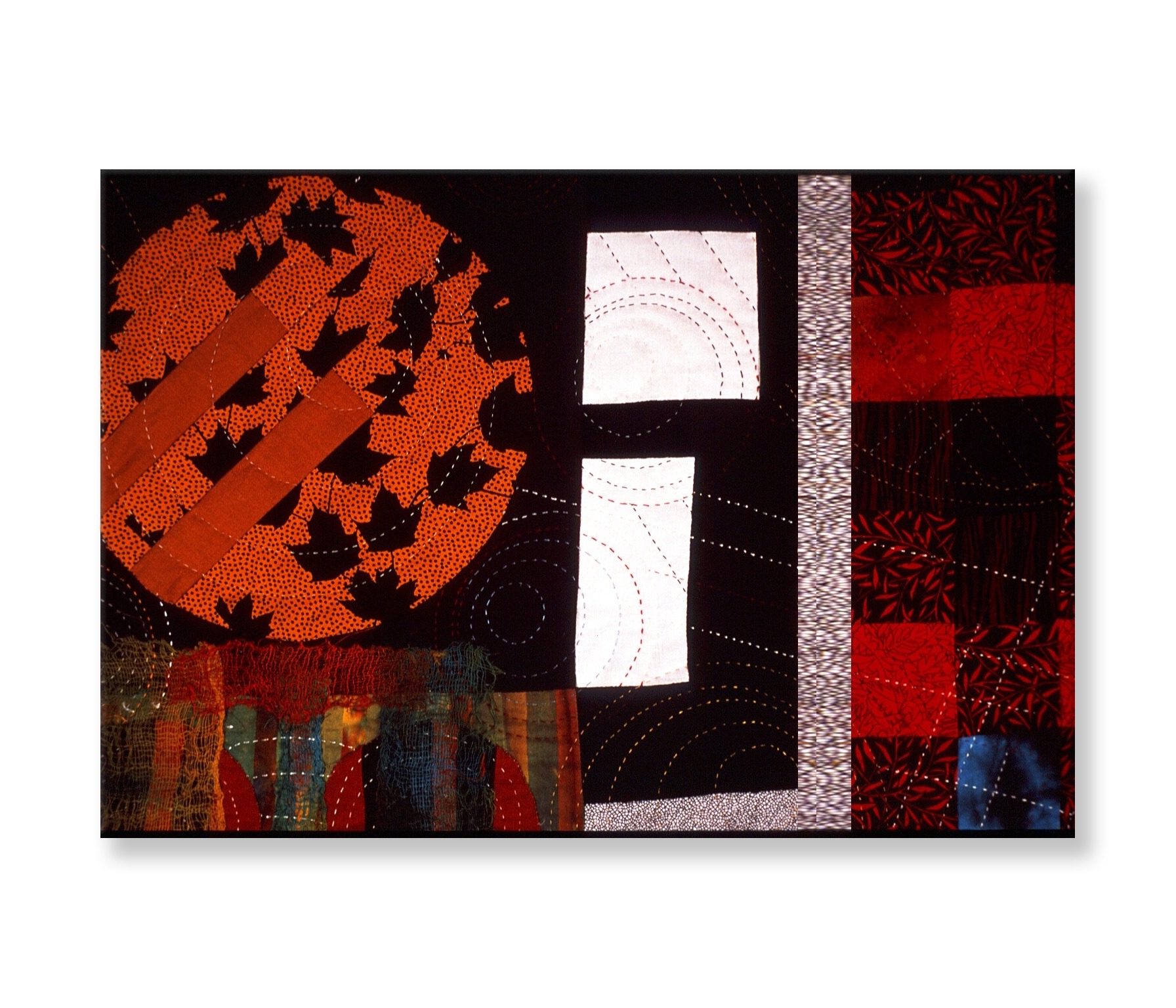
What or who were your early influences and how has your life/upbringing influenced your work?
My maternal grandmother, a home economics teacher, gave me a love of sewing. In the 1960’s I remember learning to sew during hot and humid summers while on vacation at my grandmother’s home in Tuscumbia, Alabama. I learned to make simple clothes for myself and my three sisters. Mama Steele would show me quilts made by an elderly cousin who lived in the household. She was a prolific quilter and made many, many quilts that family members cherish to this day. I like to think that the DNA of these two great women influence and guide me.
My mother encouraged me to sew. She saw how satisfying it was to me. I would say she was the nurturer in our family. My father always wanted us to push ourselves, strive for excellence. He gave me the confidence to tackle architecture as a career.
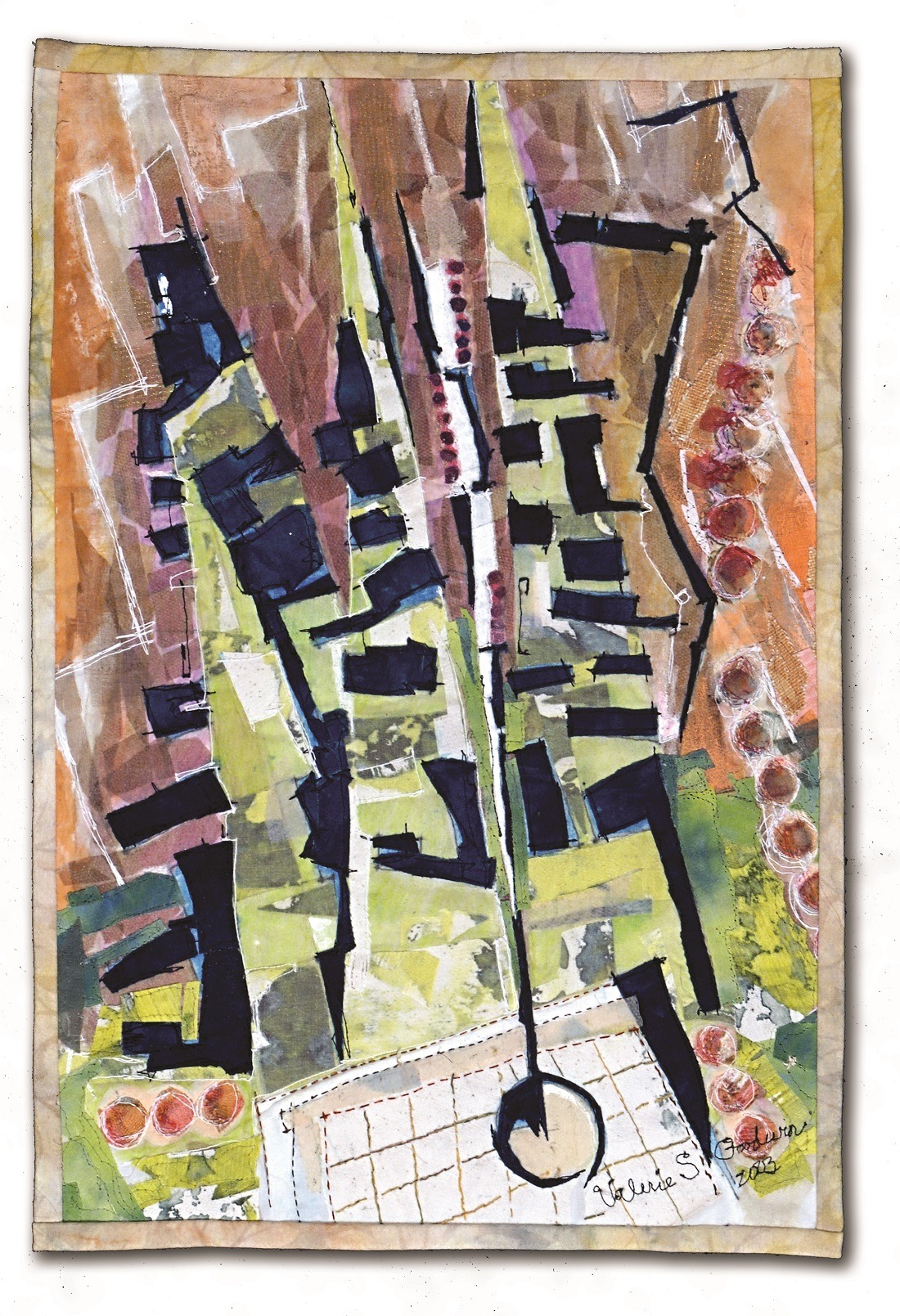
What was your route to becoming an artist?
My interest in quilting developed quite by accident. I read an article in an academic journal that described a design studio project where architecture students were asked by their teacher to design a Museum for Quilts. After reading how she inspired her students, I became curious about what I could do with quilting and architecture. I enrolled in some workshops, read books and in general loved to experiment. Over the years I learned, practiced and experimented with the medium and gradually a career as an artist emerged.
My second quilt, which was traditional, was juried into a few of the quilt shows. As I learned mixed media and collage techniques and developed my own style and point of view, my work was juried in many prestigious quilt art exhibits. This led to solo shows and many invitational exhibits.
Most recently I was asked to create a piece for a special exhibit at the Clinton Presidential Library.
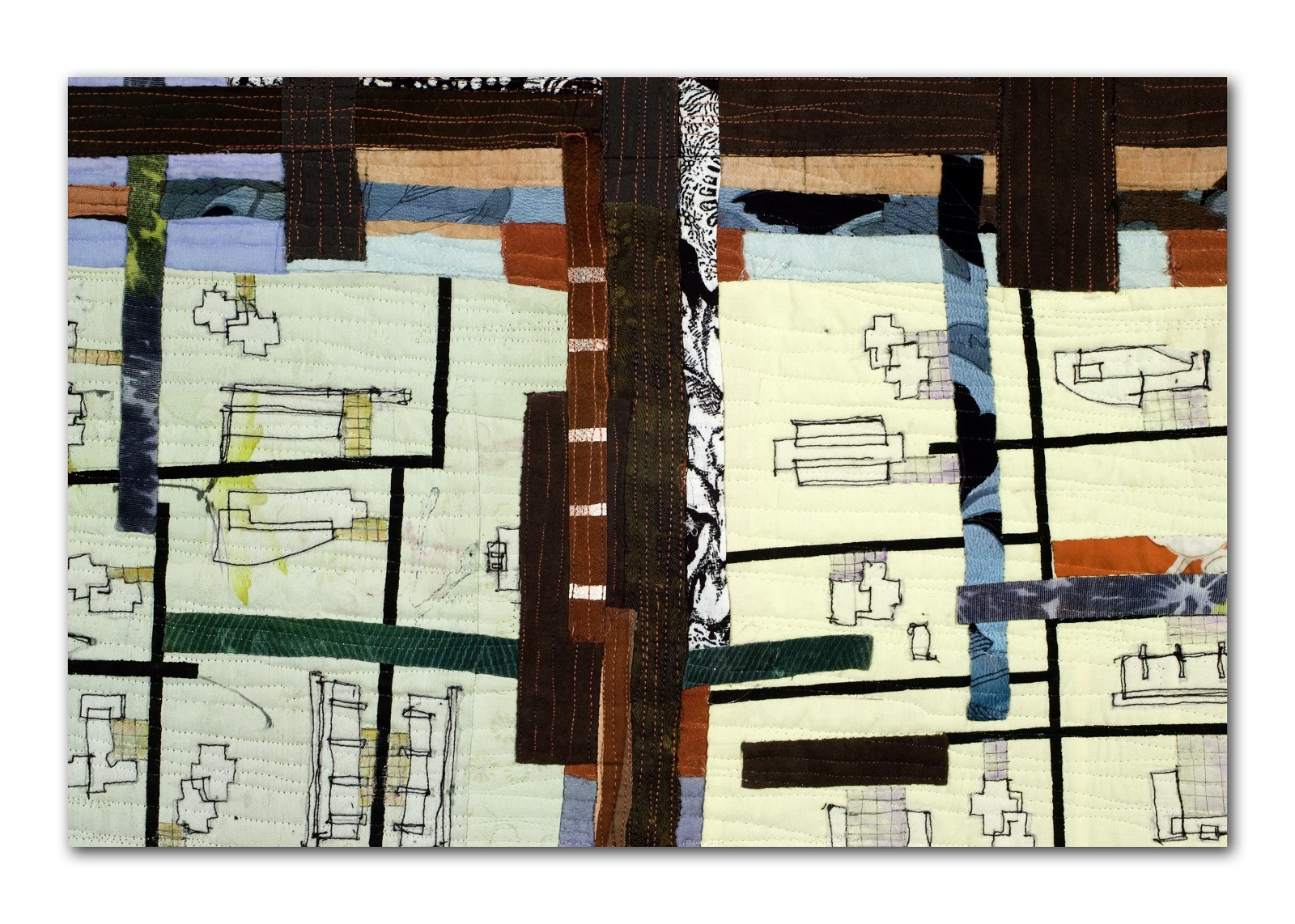
Responding to materials
Tell us about your process from conception to creation
My process is not baked in. Sometimes I work in a linear fashion. I start with a definitive concept, develop several concept sketches, select one and then draw it larger and add more detail and then start to work on my quilt. At other times I just start making. I play and experiment and respond to the materials and any emerging shapes, patterns and colors, plus processes and interests that inspire me at the moment.
I am inspired by maps that tell a story such as the African Burial Ground in Lower Manhattan. I see structures and patterns in nature and architecture that I can incorporate into my work. I have a vast collection of inspirational images and topics that I collect on Pinterest, topics that I am exposed to as a result of being aware of design thinking that is particular to architects.
I like to say that inspiration is everywhere and that one has to be receptive to the world around them. One of my favorite sayings is: “One must have eyes that can ‘see’”. I try to keep my eyes open and soak in the visual world around me.”
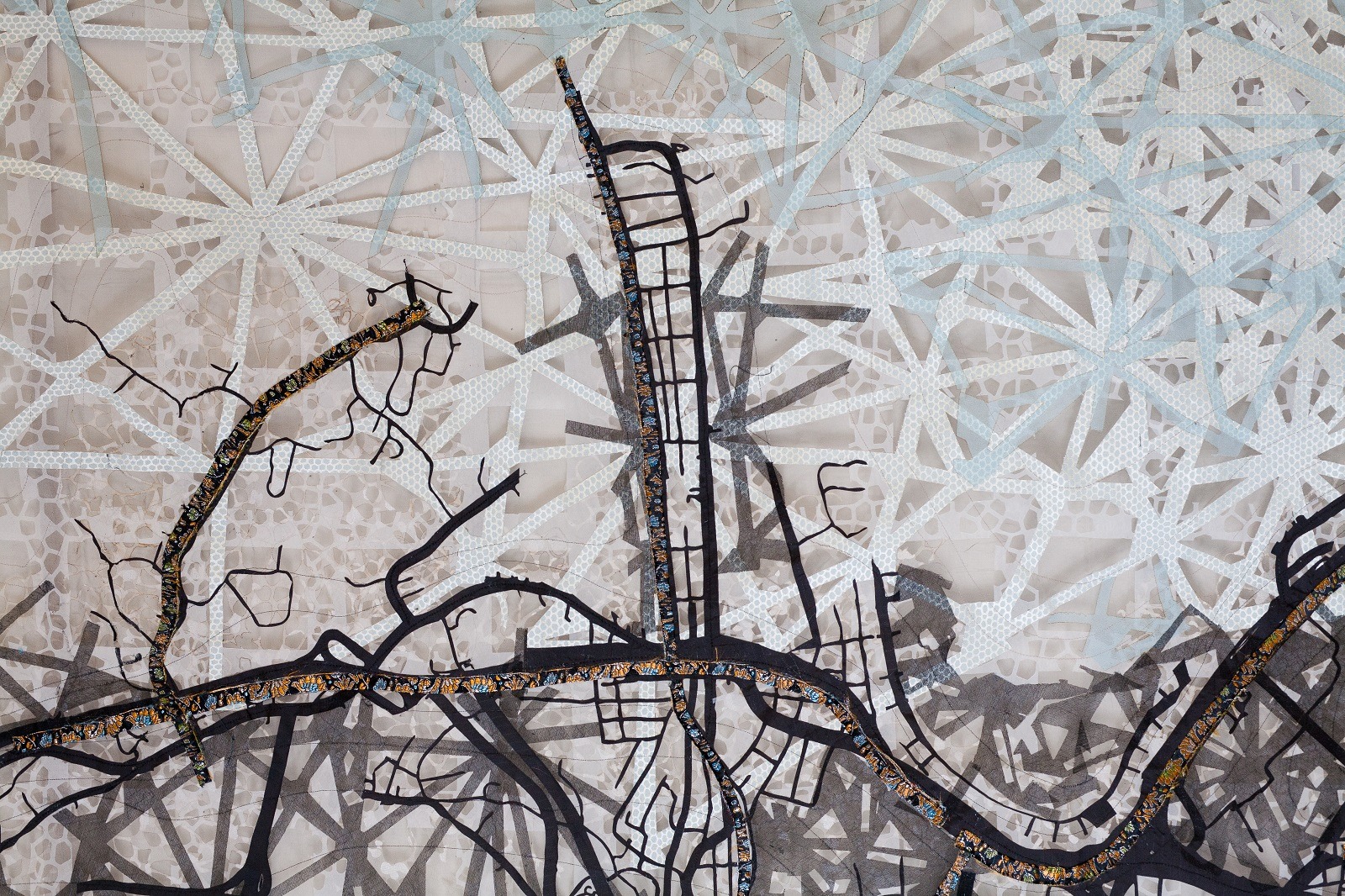
Tell us a bit about your chosen techniques and how you use them
I am intrigued by some of the latest cutting edge technology. Currently I use a laser cutter to create patterns and designs by cutting into fabric. This process allows me to create fiber art that is lace-like and intricate while incorporating a variety of less technical stitched-art techniques that aren’t part of the digital realm.
I enjoy layering and experimenting with the effects of transparency; that is why I like to use silk organza.
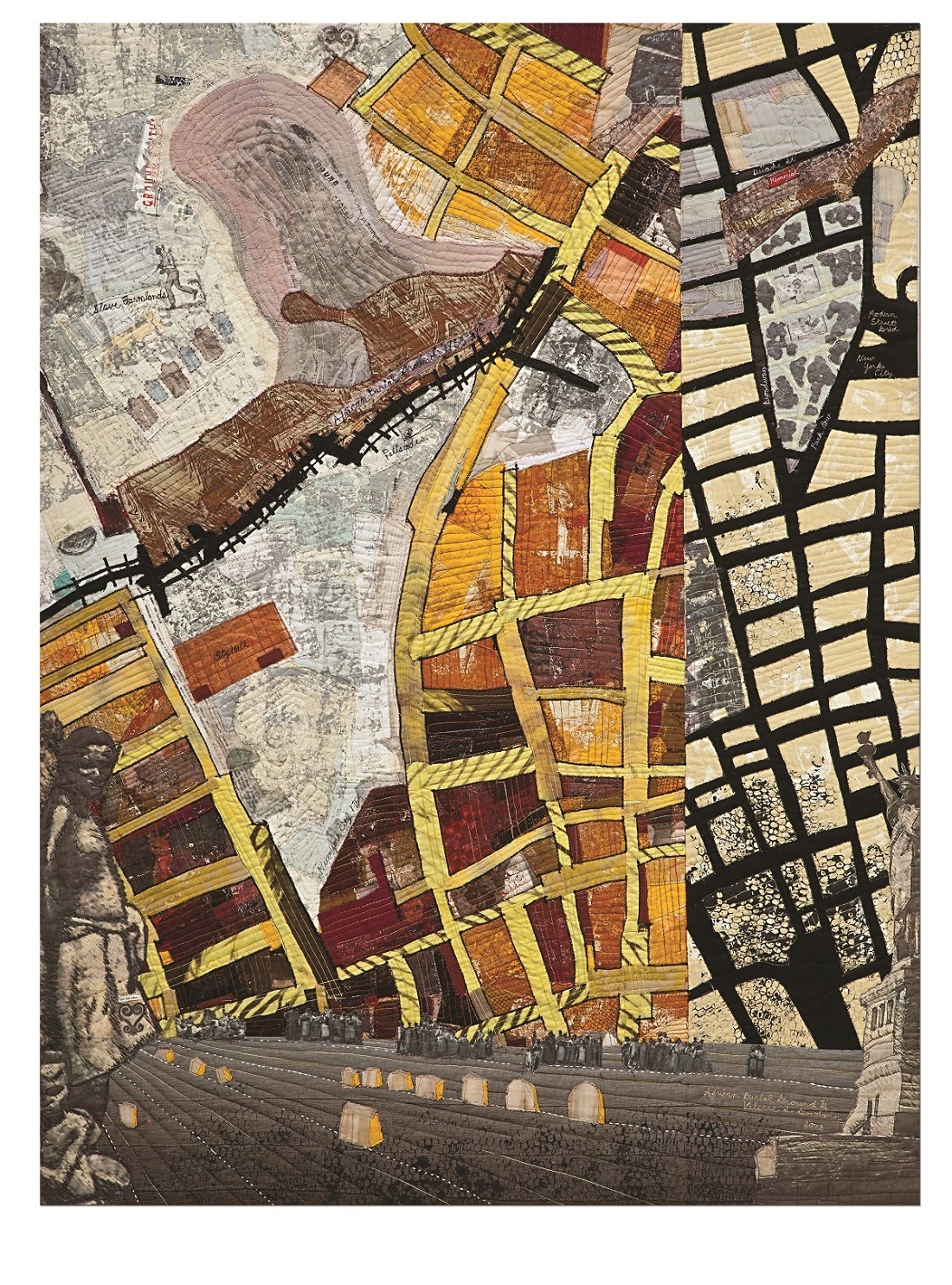
What currently inspires you?
Given all the pressing issues that we are confronted with right now, I am very interested in making fiber art maps that speak to these issues. Lately some of my work delves into social and political issues. The pandemic, racial justice and American politics are currently on my mind. They serve as the framework for exploring these challenging and difficult topics.
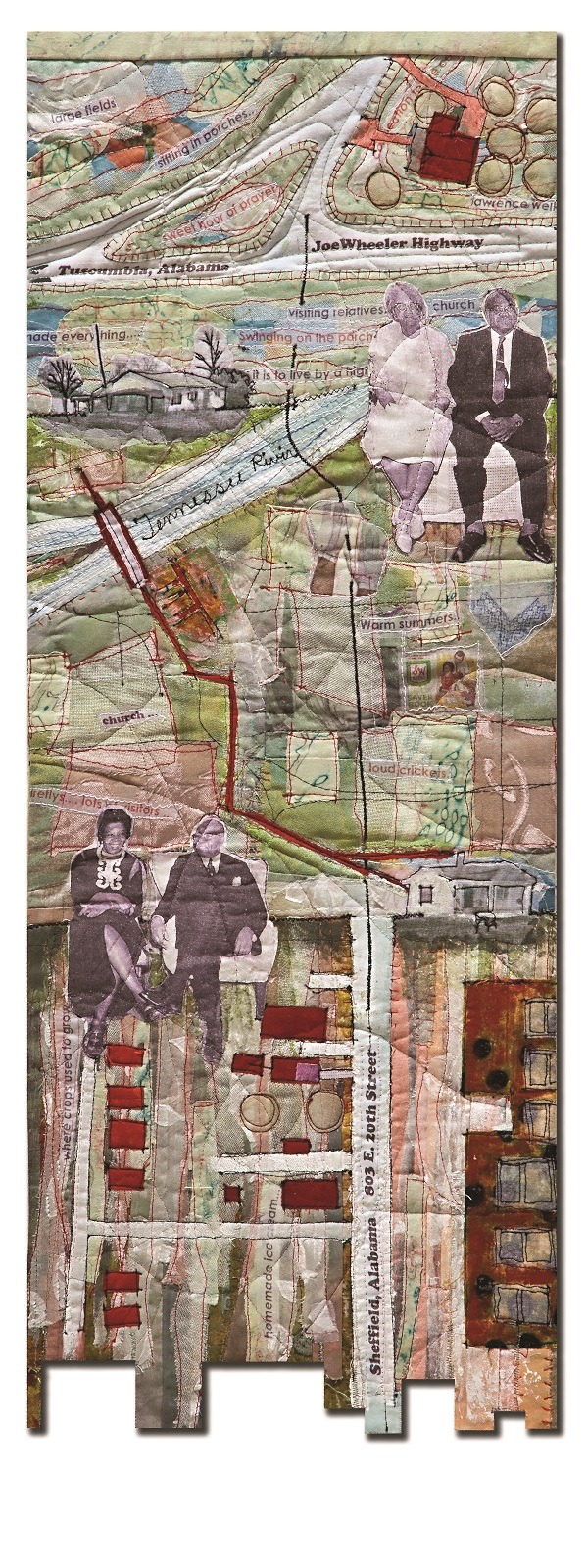
Texture, emphasis and detail
Tell us about a piece of your work that holds particularly fond memories and why?
Excellent question! My early quilts hold a very special place in my heart. They were made using traditional quilt making techniques. Each of my children, nieces and nephews received a handmade quilt when they graduated from high school. Family is extremely important to me and I cherish the way quilts can preserve memories and family history.
The early quilts that I made for family members were personalized to reflect something about that person. For instance, one quilt was very graphic. I designed several blocks that represented different designs of the letter “E” the first letter in my niece’s name. In another quilt, I used the tee shirts that my nephew had accumulated as a high school athlete.
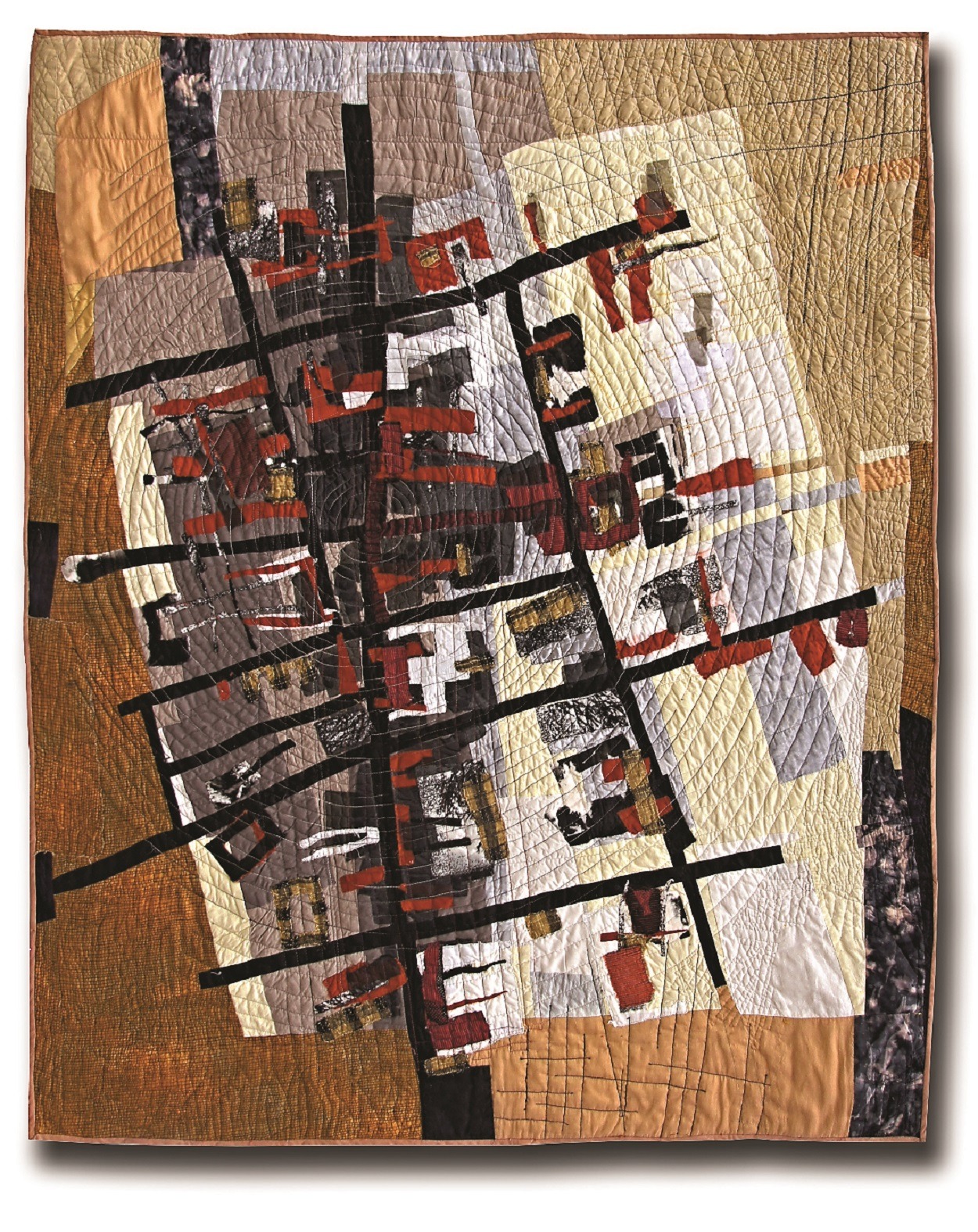
How has your work developed since you began and how do you see it evolving in the future?
My work has gone through various stages in terms of technique and subject matter. I began with traditional quilting and subsequently started incorporating mixed media and fabric collage. In all these stages, stitching has played a major role. Aside from keeping the fabric together, it adds texture, emphasis and detail.
Being retired has given me the space to make more art. Right now, I just value time for “making” and pushing myself creatively. I see myself as an artist who works in both traditional and digital mediums. I really look forward to seeing where this leads me.
In terms of hand stitching, I enjoy couching, the running stitch and the overcast stitch. These are the stitches I highlight in the textileartist.org Stitch Club workshop. In terms of machine stitching, I usually rely on the straight stitch and a few of the simple machine embroidery stitches.
All of these stitches, whether they be by hand or machine, are used to add texture, articulated detail and they create hierarchy. Like some architectural drawings, my stitched lines must be joined at corners and overlap. An example can be found in the architectural floor plans drafted by Frank Lloyd Wright.
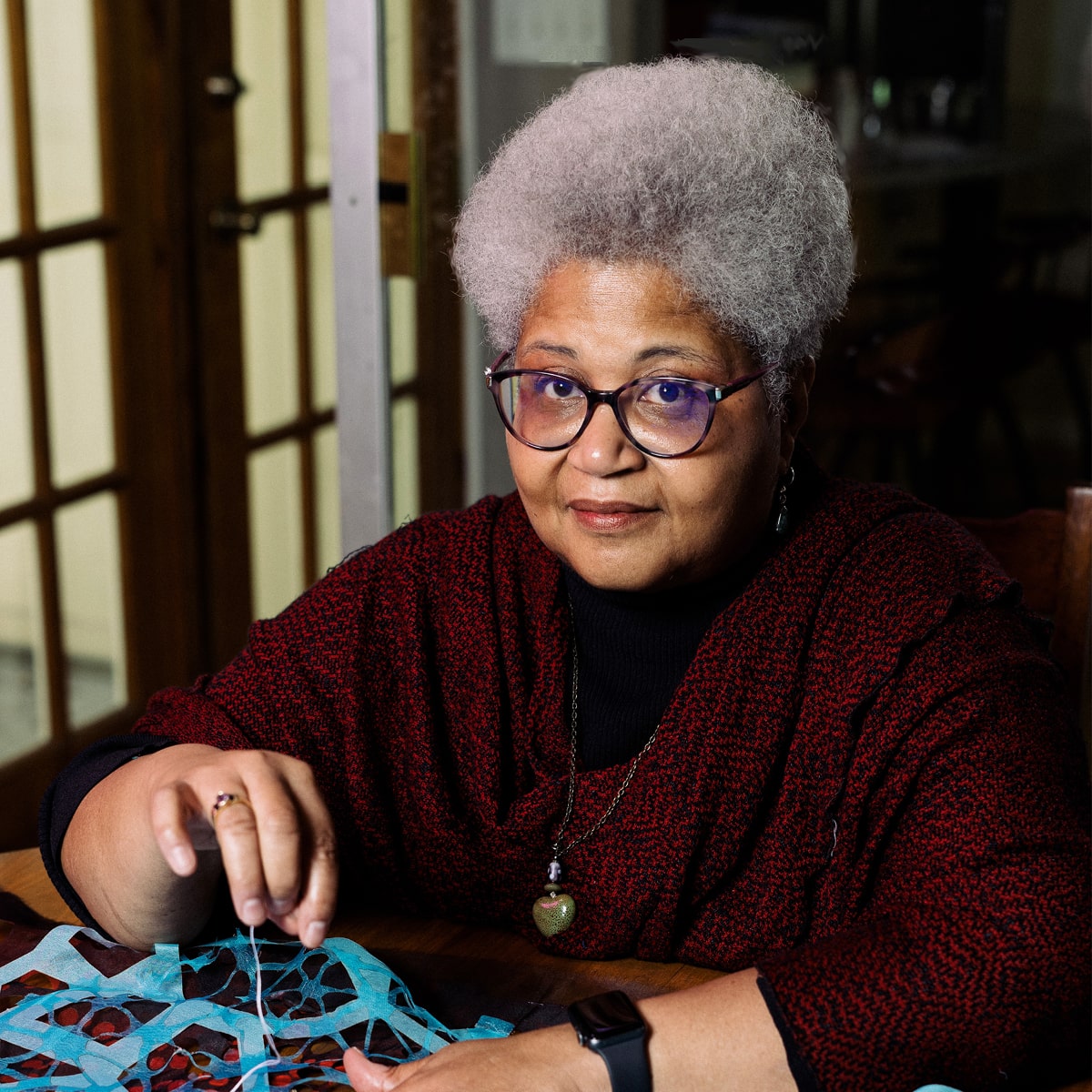
For more information visit www.valeriegoodwinart.com
Has Valerie’s story stimulated any new ideas for you? Let us know in the comments below.
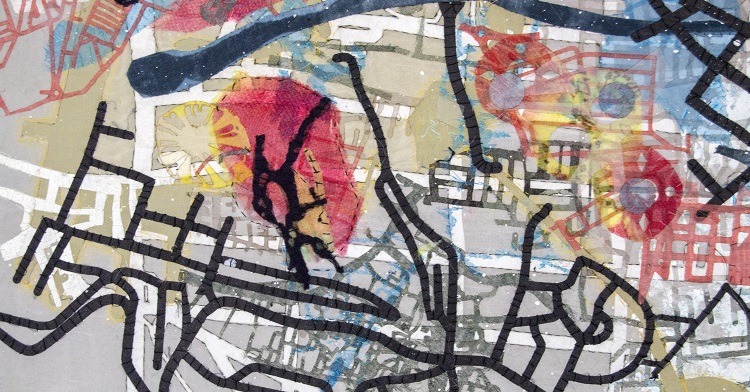
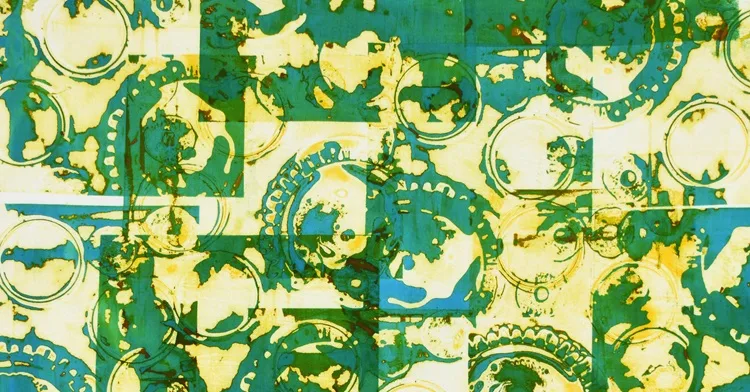
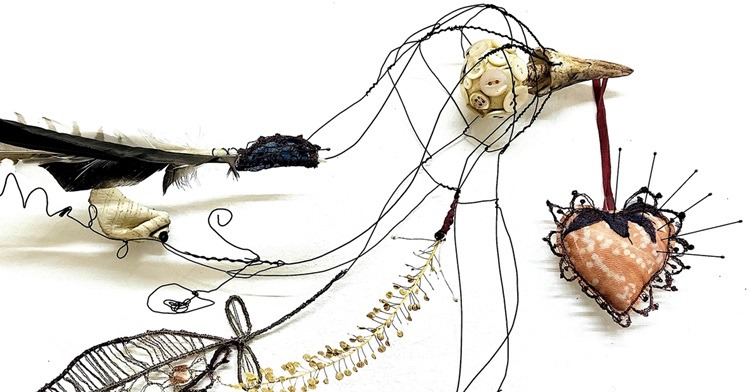
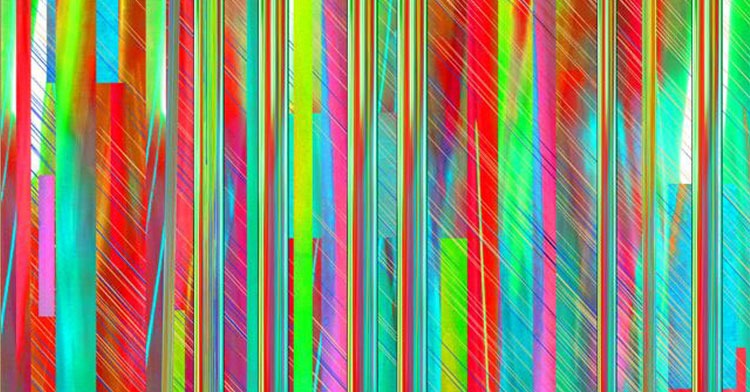
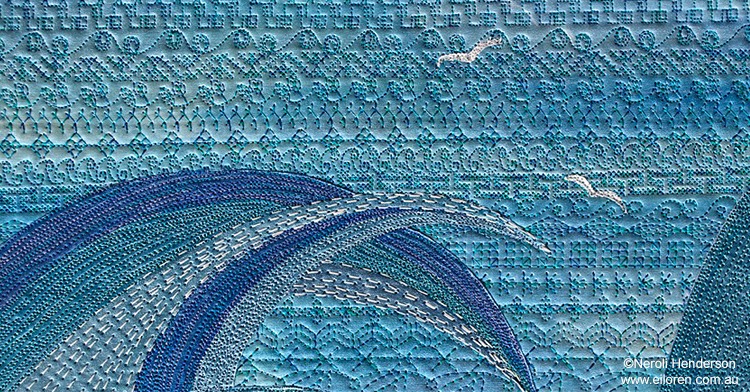
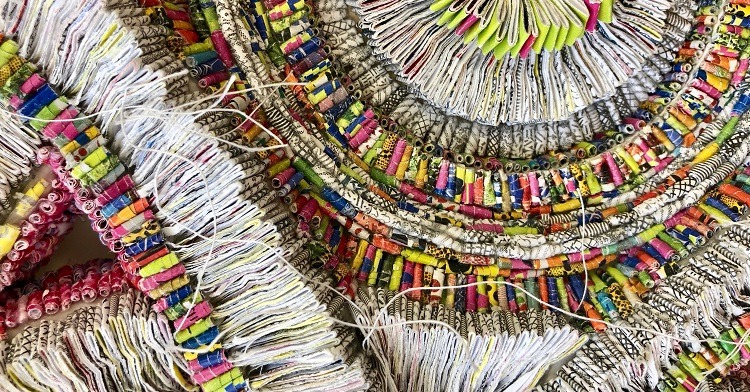
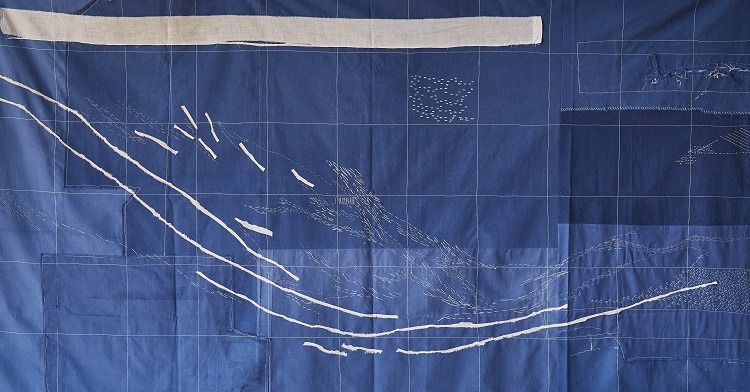
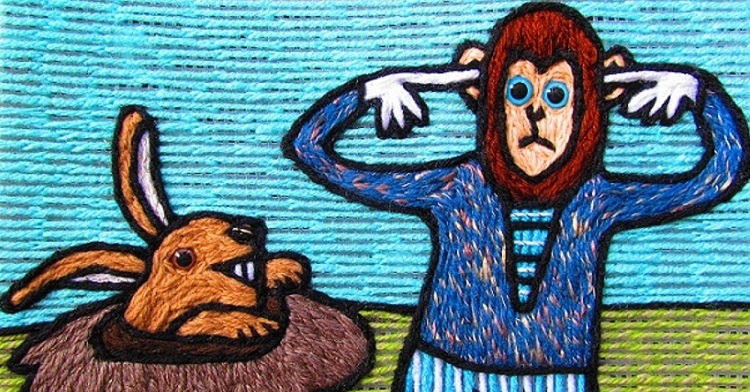
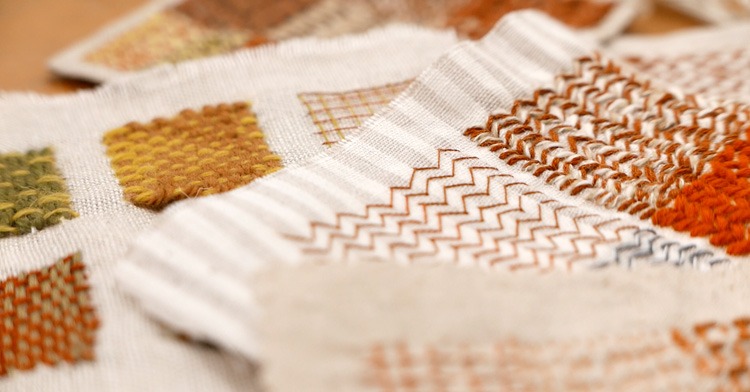
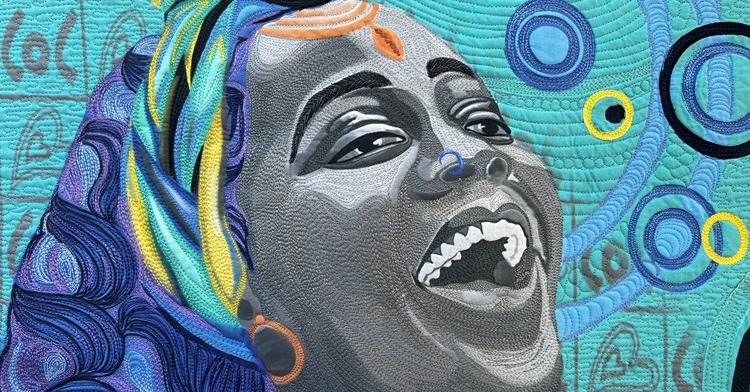
14 comments
Visitech Eye Centre
What a Beautiful art work. Really liked the designs.
Harshit Shukla
Beautiful design I will be looking forward to read more from your end…
Ines
This interview was so inspiring to read! Thank you so much Valerie for sharing your ideas and giving insight into your artistic development! I especially adore your combination of architectural and structural principles with textile art. I am an architectural historian from Germany and just started experimenting with some handstitching, as I am fascinated with the storytelling aspect of architecture, the history and Sense of Place.
Do you plan any online workshops during the next time? Maybe in the StitchClub?
I would really love to join!
Thank you so much! Ines
Denise Dunn
I have only just discovered Valerie Goodwin’s work which has greatly inspired me to experiment with architecture as a media for abstract art. After studying textile design throughout teacher training, I have struggled finding confidence to create my own artwork. Now I think I have found direction. Thankyou.
ruhi malik
Nice Designs. I am wondering they will look pretty good while doing Digital Printing on apparels.
Jan Bevan
I’ve admired Valerie’s work for some time and have her book. I am excited to be able to take a workshop with her through Stitch Club.
Valerie Goodwin
Thank you Jan:)
Regina Dunn
Valerie’s works are truly examples of fine art.
Jennifer Gould
I have loved Valerie Goodwin’s textile work ever since I read and devoured her book, “Art Quilt Maps, Capturing a Sense of Place.” There are so many wonderful ideas she offers and generates to give inspiration to all. I’m so glad to see her featured on TextileArtist.org. Thank you!
Lindsay Olson
Valarie is a wonderful teacher and artist. I was lucky enough to have had a class with her. She is very inspiring!
Valerie Goodwin
Hi there Lindsay and thank you! How’s the new piece going?
Lori Wiseman
Fascinating. Thanks.
maggie erwin
The interview held my attention giving me a starting point for a project I have brewing, ‘images of 2020’.
Thank you Maggie
Valerie Goodwin
Good to hear! I would love to see what you decide to create Maggie:)